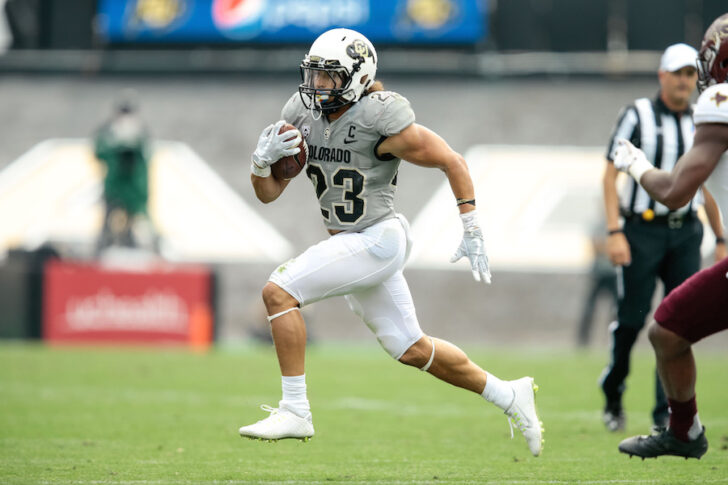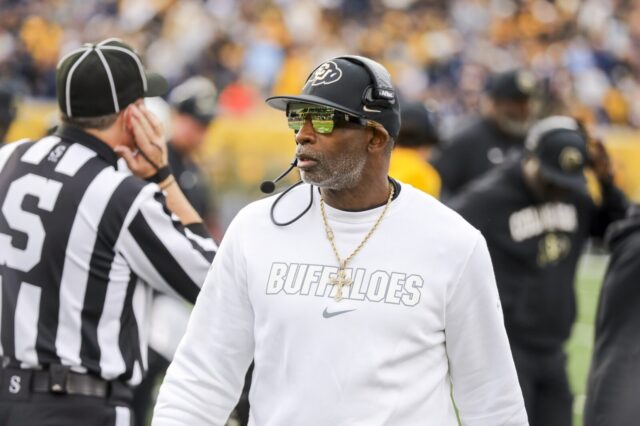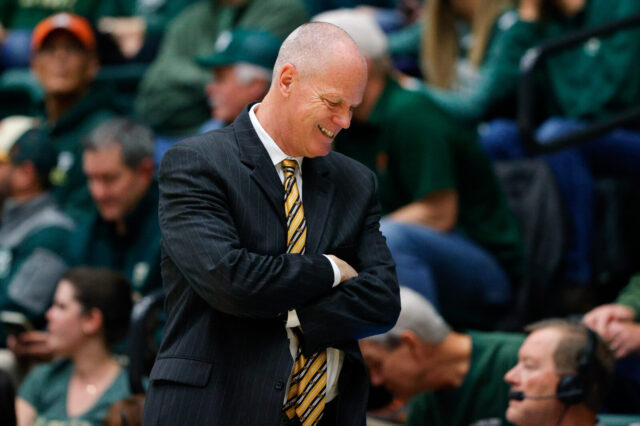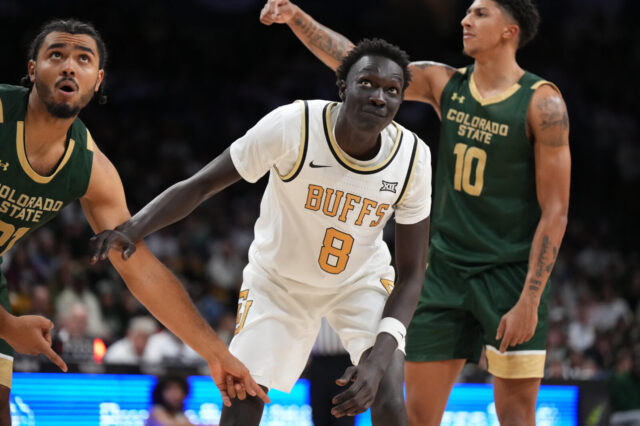One very big question will be on the minds of everyone in Broncos Country when the 2018 NFL Scouting Combine gets rolling this week…
“Will John Elway and his team of talent evaluators see enough in one of the top quarterbacks in this year’s draft class to forego throwing more than $100 million at Kirk Cousins?”
Elway and his crew, specifically head coach Vance Joseph and the rest of the Broncos coaching staff, already had a firsthand look at many of the top draft prospects as coaches of the Senior Bowl. Could the Combine put one of those QBs over the top enough to convince Elway not to blow up his roster in order to chase Cousins in free agency?
The question I’ll be pondering, however, is a bit more simple…
“Why the heck isn’t Phillip Lindsay there?”
The University of Colorado running back did not receive an invite and instead is focusing his energy on his pro day and ongoing workouts at Landow Performance (Denver’s marquee sports performance training facility, owned by recently named Broncos strength and conditioning coach Loren Landow).
It’s not as though Lindsay doesn’t have the credentials to deserve an invite.
Lindsay concluded his playing career just 87 yards short of being inside the top 15 on the Pac-12 Conference’s all-time rushing list (bowl stats included).
One name above him on that list — Oregon’s Royce Freeman (No. 2 all-time) — will showcase his skills for NFL scouts and coaches at the Combine.
Two names below Lindsay on that list — USC’s Ronald Jones (No. 22) and Arizona State’s Demario Richard (No. 36) — will also be there. So will another trio of Pac-12 backs who are outside the top 50 on that list, ASU’s Kalen Ballage (from Peyton, Colo., by the way), Oregon State’s Ryan Nall and Washington’s Lavon Coleman.
Rushing yards obviously shouldn’t be the only standard by which players are evaluated and selected for the Combine. For example, Lindsay’s stats were compiled over a four-year career with the Buffaloes, whereas Jones and Nall will leave the college ranks after just three. However, the Buffaloes’ all-team leader in all-purpose yards had some serious numbers to back up a bid.
According to CU’s sports information department, Lindsay will depart Colorado as the program’s all-time leader in all-purpose yards (5,760) and yards from scrimmage (4,683) — bowl stats not included. He was second in rushing (3,707), first in receptions (110) and receiving yards (976) by a running back, fourth in scoring (234 points, second-most by a non-kicker), second in rushing TDs (36), and first in the most career first downs earned by a non-quarterback (234).
Sure, the Pac-12 is an offensive conference and at times Lindsay was the Buffs’ only option on offense, but those are impressive numbers no matter where or how they were compiled.
Beyond the numbers, Lindsay passed a key eye test from an important group of talent evaluators but was still excluded.
Lindsay in 2017 was one of 11 semifinalists for the Doak Walker Award, given to the nation’s top running back. Of the seven finalists from that group who declared eligible for the 2018 NFL Draft, he was the only one not invited to the Combine.
It’s not as though Lindsay is hard to miss. With his massive mane of hair and a tireless running style that earned him the nickname “Taz,” it was always evident when the Denver South High School product was on the field for the Buffaloes. Opposing defenses had to scheme against him and make sure he was accounted for every second he was on the field.
That may account for perhaps the biggest knock on Lindsay, too, however. Coming out of Colorado’s RPO (run-pass option) offense, Lindsay hasn’t necessarily built up a prototypical NFL skill set.
The other knock on Lindsay could be his size. At 5-foot-8 and 190 pounds, Lindsay would be the smallest back at the combine. But he would have some similarly sized company. Three other running backs – – Fordham’s Chase Edmonds (5-foot-9, 205 pounds), N.C. State’s Nyheim Hines (5-foot-9, 197 pounds) and Tennessee’s John Kelly (5-foot-9, 205 pounds) — all check in with relatively similar stats.
Still, Lindsay’s impressive numbers and accolades ought to have been enough to include him among the 32 backs invited. If those weren’t enough, his intangibles ought to have helped.
Lindsay was a workhorse for head coach Mike MacIntyre.
He set a new CU record for the most rushing attempts in a season with 301. He led the nation in rushing attempts and was ninth in total rushing yards with 1,474. He set a new school record with his 41 rushing attempts against Arizona that went for a career-high 281 yards and three touchdowns. He recorded 732 career rushing attempts, but just 90 yards lost on those carries. He earned 28 career starts and appeared in 51 games, leading the Buffs in games played. He has 11 100-yard rushing games to his name and two above 200.
What’s more, Lindsay was a leader.
In his first season on the field, 2014, the Buffs won just two games. Times were lean in Boulder, and optimism outside the program was the same. Yet Lindsay was one of those inside the locker room that kept faith and remained positive, knowing “The Rise” would come soon. Two years later, Lindsay was named a team captain as a junior and helped lead the Buffaloes to a top-25 ranking and the school’s first Pac-12 South title. He maintained his captaincy as a senior and was named the team’s most valuable player at the end of year awards banquet. Fans bestowed on him the prestigious Buffalo Heart Award at season’s end. The media named him the team’s best interview.
Denied his chance to put his talents on display head to head with other backs, Lindsay is using the Combine snub as motivation. He reminded his fans (and NFL scouts) of his motivation on Twitter just a few days ago.
“They measure height, they measure weight, but they can’t measure the heart of a man. Have that Dog Mentality ? ???#NFL,” Lindsay wrote.
Yes, much of this case for Lindsay’s Combine invite existed within the vacuum of CU football. And if we’re being totally honest, the Buffs over the past several years — especially on the offensive side of the ball — haven’t given NFL scouts much reason to include them. But Lindsay’s being one of the driving factors in CU’s worst-to-first turnaround in the Pac-12 South from 2015 to 2016 has to count for something, right?
Sure, Lindsay may not be at the same level as Penn State’s Saquan Barkley (a consensus top-5 overall pick, some experts say No. 1) or LSU’s Derrius Guice (a top-20 talent), or even USC’s Jones (another top-20 projection). But is he really not one of the 32 best running back prospects entering this year’s NFL Draft?
That’s the question I’ll be trying to figure out this week as the 2018 NFL Scouting Combine unfolds.



